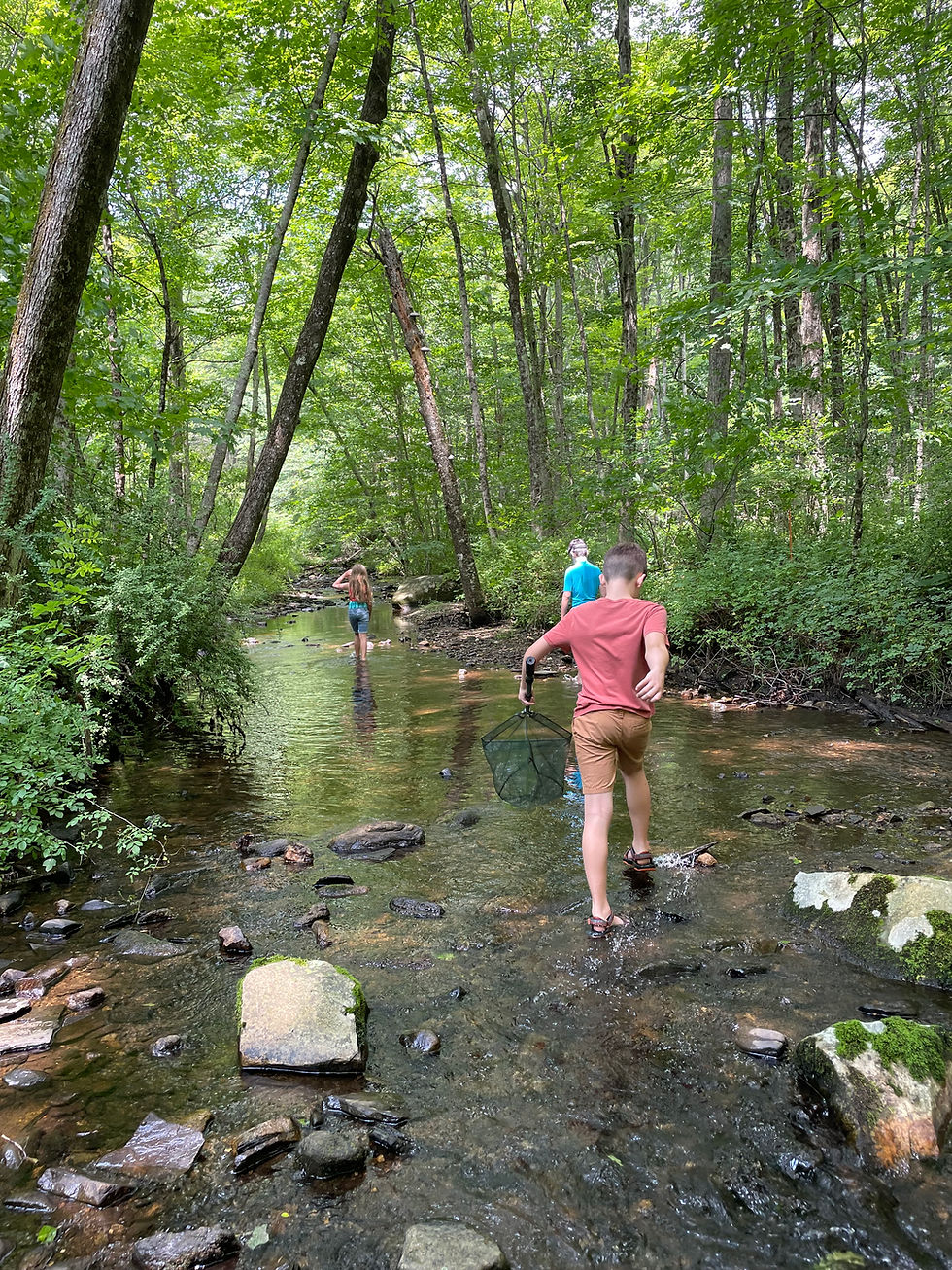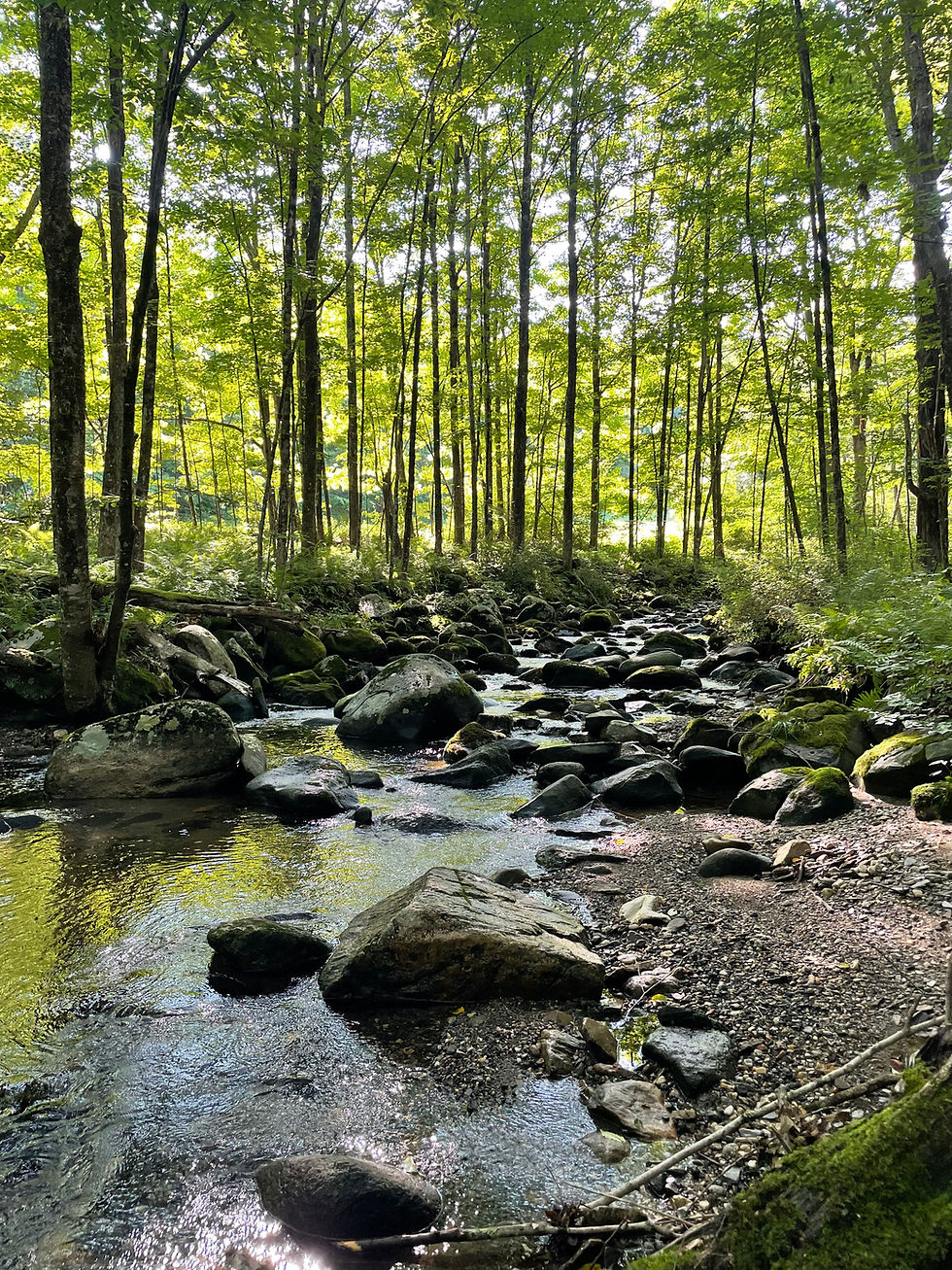
Get outside and explore!
The 2025 summer series has ended!
Thank you for a wonderful summer. Stay tuned for upcoming fall and future sessions.
Summer 2025 Programs
Babies and Toddlers Group
Tuesdays, 10:00 - 11:30
July 15 - August 12
(5 sessions)
NEW SESSION ADDED:
Thursdays 10:00-11:30
July 10 - August 7
This program welcomes families or caregivers with young children (suggested ages 0-5) to gather outside and get our feet muddy! Children can enjoy open exploration time, as well as participate in songs, stories, sensory activities, or crafts related to the season and local ecosystem.
This program is offered on a sliding scale.
**You can still join our Thursday session, which began 7/10**
Please note: Based on interest, I'm going to focus on the 0-5 age group this summer. To learn about the previously listed Mixed Ages group, click here or scroll down. You can vote your interest in seeing that program run next summer!


The 2025 summer series has ended!
Thank you for a wonderful summer. Stay tuned for upcoming fall and future sessions.
Get outside and explore!
The 2025 summer series has ended!
Thank you for a wonderful summer. Stay tuned for upcoming fall and future sessions.
What is a Forest School?
Forest schools are fully outdoor schools that make use of the richness of natural environments for child-led learning opportunities.
In an outdoor setting, children develop their physical strength, balance, and confidence as they navigate the world around them. They develop social skills while undertaking projects together, and they develop discipline as they are guided into managing their own safety outdoors.
The immersive outdoor environment allows for children's questions about the world to arise naturally. Forest school leaders can follow these questions right into science, technology, engineering, art, and mathematics projects.
This allows for more engaging learning that makes use of children's natural curiosity.
Forest schools are fully outdoor schools that make use of the richness of natural environments for child-led learning opportunities.
In an outdoor setting, children develop their physical strength, balance, and confidence as they navigate the world around them. They develop social skills while undertaking projects together, and they develop discipline as they are guided into managing their own safety outdoors.
The immersive outdoor environment allows for children's questions about the world to arise naturally. Forest school leaders can follow these questions right into science, technology, engineering, art, and mathematics projects.
This allows for more engaging learning that makes use of children's natural curiosity.

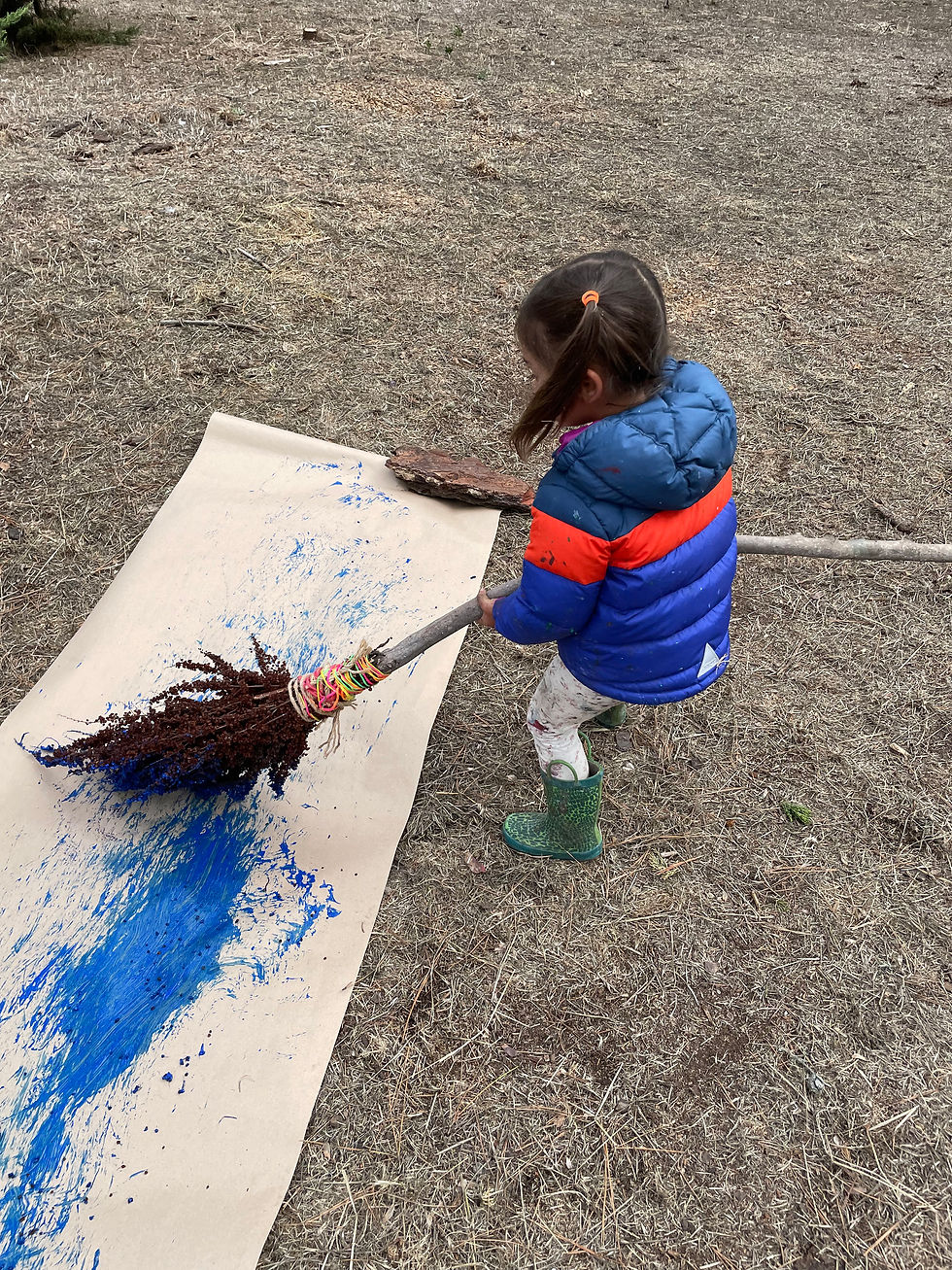
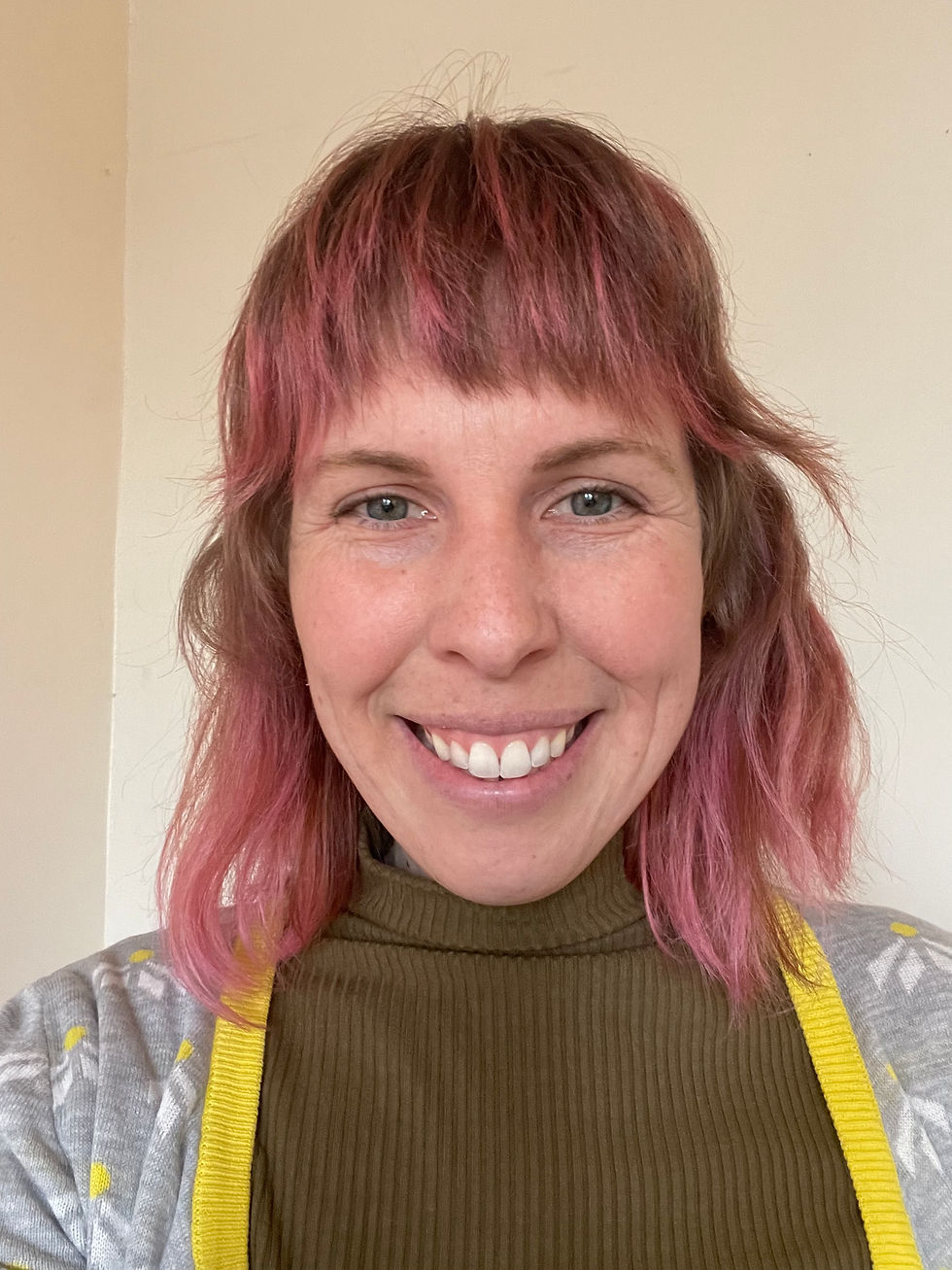

WCFS Leader
My name is Helen Gilbert Gaus, and I grew up on this land.
I became an artist and a parent in the city, then followed the call back to nature. It began as just playing outside every day with my daughter. It grew into learning everything I could about forest schools, and eventually turned into leading my own programs.
I live bi-coastally. This year I launched Wood Creek Forest School in Bethlehem, Connecticut. I also began leading educator coaching sessions with San Francisco Children & Nature. Previously, my introduction to early childhood education was through working at a Reggio Emilia preschool and becoming the song leader for a Waldorf playgroup. I am inspired by outdoor emergent curricula and child-led learning, as well as methods of supporting neurodivergent learners. The most important lesson—that I am always relearning as a parent and a teacher—is to recognize when it's time to step back and give them room!
Additionally, I am Red Cross certified in pediatric and adult first aid and CPR, as well as NOLS certified in wilderness first aid. I am on my way to a certificate as a CT Master Woodland Manager in 2026.
Growing up here instilled in me a deep love and respect for the more-than-human world. I wish to offer others the same opportunity I had through Wood Creek Forest School.
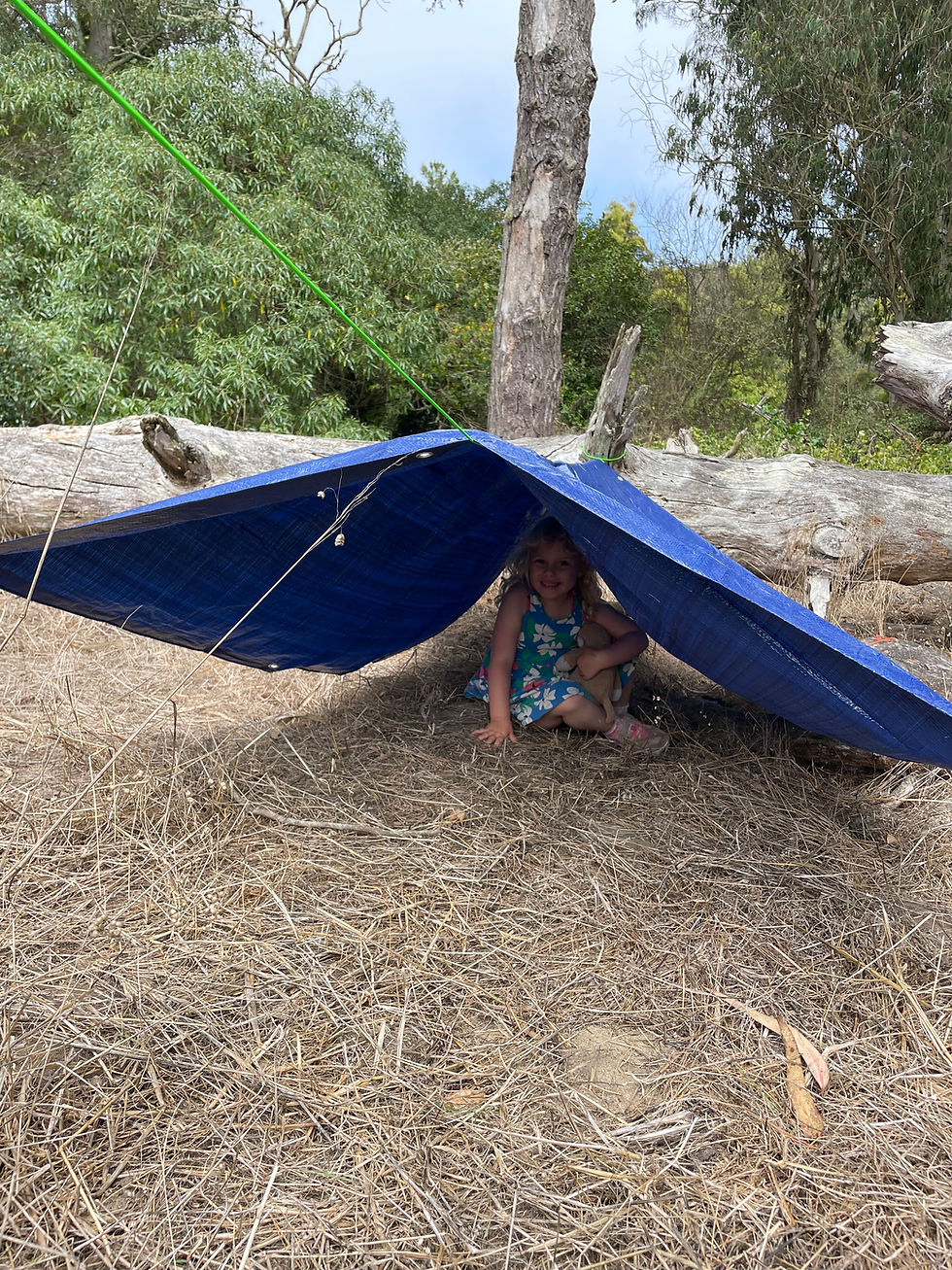
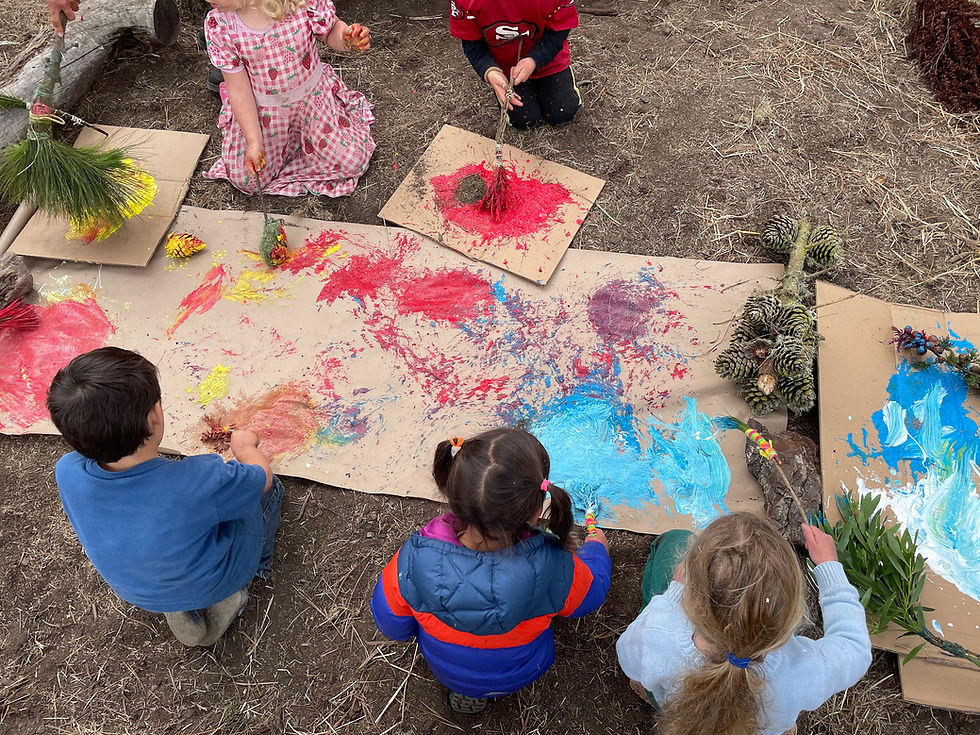
What kinds of things will we do together?
The most important thing we will do together is give your children the chance to be out in the woods, off-trail, but supported. I am currently offering two programs, each designed for families with different aged children.
Here are some more details for what each program offers:
The Children's Circle Programs
Recommended for ages 0-5
At this age we bring our focus in closer. I help you and your littlest ones build comfort and connection with the outdoor environment through songs, stories, movements, and lots of sensory experiences. Stuffies, puppets, and books are tools that can help build interest and familiarity around new creatures.
I offer repeated opportunities to handle real critters safely, and get our feet wet and muddy in the creek, which encourages even the more cautious kids to begin to explore. We begin to discuss safety for ourselves and care for the forest in the simplest terms. Here are a few weekly topic examples:
Our Friends the Trees
Finger plays and full body tree movements, meet Squirrel Nutkin, Great Horned Owl, and other tree-dwelling puppets, touch different tree bark and make impressions in play dough.
Minibeasts
Lots of silly songs about the bugs that crawl, creep, and fly all around us, with props and puppets. Use magnifying glasses and jars to inspect the woods for tiny critters. Go on a bug treasure hunt hike.
Meadow Friends
Tickly songs and movement games about furry little critters that dig, hide, and hop through our meadows. Make native meadow flower seed bombs from dirt and clay.
Forest Skills Programs
Recommended for children ages 5+
This program will welcome children of all ages with parents or caregivers, and is designed to primarily engage school aged children 5+, and their adults, so families can participate together.
We will explore local habitats and their resident plants and animals, work on related STEAM projects, and practice a few skills for fun and safety outdoors. Here are a few weekly topic examples:
Shelter
Make dens for playing and rain shelters so you can be outside more! Try out sticks, leaves, tarps, and ropes for various shelters. Learn some knots and use a hand saw.
Magical Forest
Find and create your own magic wand, go on a treasure hunt with a magical map, make potions and pixie dust. Use a peeler/knife, practice navigation skills, and begin exploring rocks and minerals.
Creek
What makes a healthy creek? How is this reek doing? Use nets and macroinvertibrate charts, thermometers, pH and turbidity tests to put together an assessment of the creek's health. Learn native and invasive plant and animal ID, sharpen your observation skills, and get your feet wet.

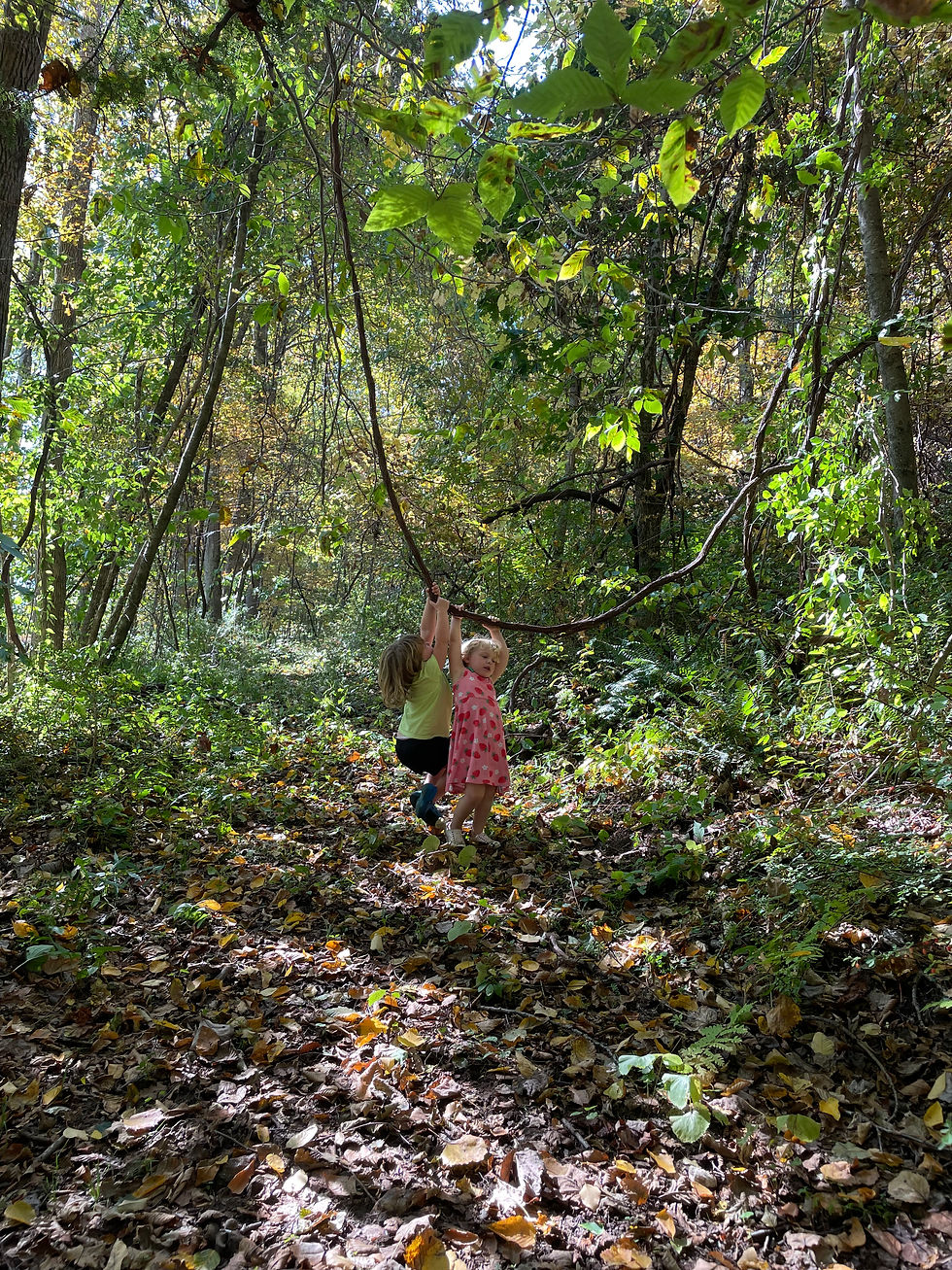.jpg)
What kinds of things will we do together?
The most important thing we will do together is give your children the chance to be out in the woods, off-trail, but supported.
Here are some more details for what each program offers to different age groups:
At this age we bring our focus in closer. I help your littlest ones connect to their environment through songs, stories, movements, and lots of sensory experiences.
Stuffies, puppets, and books are tools that can help build interest and familiarity with new creatures.
I offer repeated opportunities to handle real critters safely, and get our feet wet and muddy in the creek, which encourages even the more cautious kids to explore.
Here are a few weekly topic examples:
Our Friends the Trees
Finger plays and full body tree movements, meet Squirrel Nutkin, Great Horned Owl, and other tree-dwelling puppets, touch different tree bark and make impressions in play dough.
Minibeasts
Lots of silly songs about the bugs that crawl, creep, and fly all around us, with props and puppets. Use magnifying glasses and jars to inspect the woods for tiny critters. Go on a bug treasure hunt hike.
Meadow Friends
Tickly songs and movement games about furry little critters that dig, hide, and hop through our meadows. Make native meadow flower seed bombs from dirt and clay.
The Children's Circle Groups
(ages 0-5)
Forest Skills Groups
(recommended for ages 5+)
This program will welcome children of all ages with parents or caregivers, and is designed to primarily engage school aged children 5+, and their adults, so families can participate together.
We will explore local habitats and their resident plants and animals, work on related STEAM projects, and practice a few skills for fun and safety outdoors.
Here are a few weekly topic examples:
Shelter
Make dens for playing and rain shelters so you can be outside more! Try out sticks, leaves, tarps, and ropes for various shelters. Learn some knots and use a hand saw.
Magical Forest
Find and create your own magic wand, go on a treasure hunt with a magical map, make potions and pixie dust. Use a peeler/knife, navigation skills, and
Creek
What makes a healthy creek? How is this reek doing? Use nets and macroinvertibrate charts, thermometers, pH and turbidity tests to put together an assessment of the creek's health. Learn native and invasive plant and animal ID, sharpen your observation skills, and get your feet wet.
